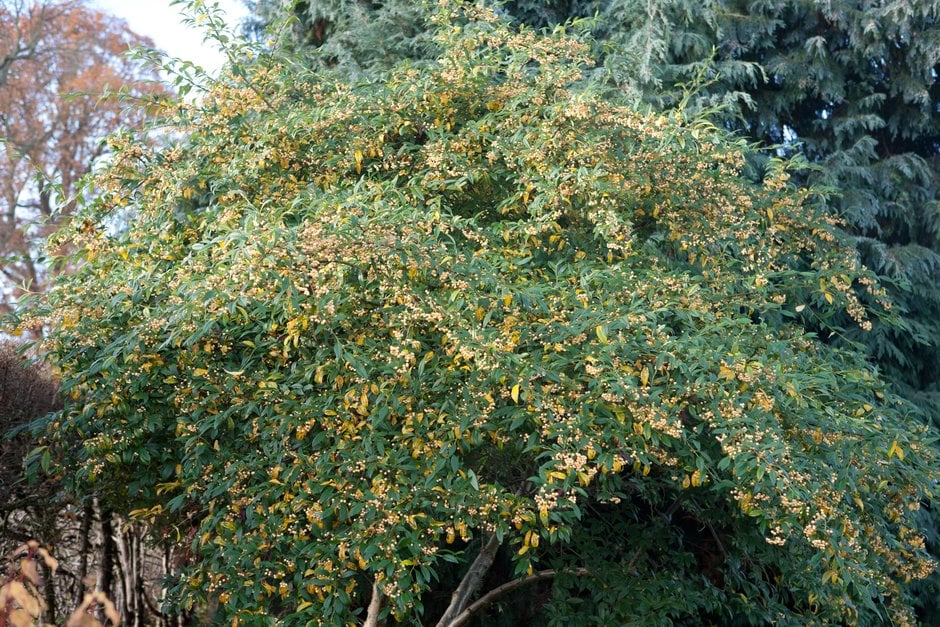Cotoneaster 'Exburiensis'
cotoneaster 'Exburiensis'
Evergreen or semi-evergreen, arching shrub about 5m tall, with narrow, lance-shaped, deeply-veined mid-green leaves. Large clusters of small white flowers in early summer followed by apricot-yellow, spherical fruits, sometimes pink-tinged in winter
Size
Ultimate height
4–8 metresTime to ultimate height
5–10 yearsUltimate spread
4–8 metresGrowing conditions
Moisture
Well–drainedpH
Acid, Alkaline, NeutralColour & scent
| Stem | Flower | Foliage | Fruit | |
| Spring | Green | |||
|---|---|---|---|---|
| Summer | White | Green | Yellow | |
| Autumn | Green | Yellow | ||
| Winter | Green |
Position
- Full sun
- Partial shade
Aspect
South–facing or West–facing or East–facing or North–facing
Exposure
Exposed or Sheltered Hardiness
H6Botanical details
- Family
- Rosaceae
- Native to GB / Ireland
- No
- Foliage
- Evergreen or Semi evergreen
- Habit
- Spreading branched
- Potentially harmful
- Fruit are ornamental - not to be eaten. Wear gloves and other protective equipment when handling. Pets: Fruit are ornamental - not to be eaten - see the HTA guide to potentially harmful plants for further information and useful contact numbers
- Genus
Cotoneaster can be deciduous or evergreen shrubs or small trees, with simple, entire leaves and clusters of small white or pink flowers in spring and summer, followed by showy red, purple or black berries
- Name status
Accepted
How to grow
Cultivation
Grow in any well-drained soil in full sun or partial shade, with shelter from cold winds
Propagation
Propagate by semi-ripe cuttings in summer
Suggested planting locations and garden types
- City and courtyard gardens
- Cottage and informal garden
- Wildlife gardens
- Low Maintenance
- Hedging and screens
- Wall side borders
Pruning
Pruning group 8 if necessary, in mid or late summer, back to the nearest fading flowers or berry cluster Pruning group 13 for wall training
Pests
May be susceptible to aphids, woolly aphid, scale insects and cotoneaster webber caterpillar
Diseases
May be susceptible to fireblight and honey fungus
Get involved
The RHS is the UK’s gardening charity, helping people and plants to grow - nurturing a healthier, happier world, one person and one plant at a time.
